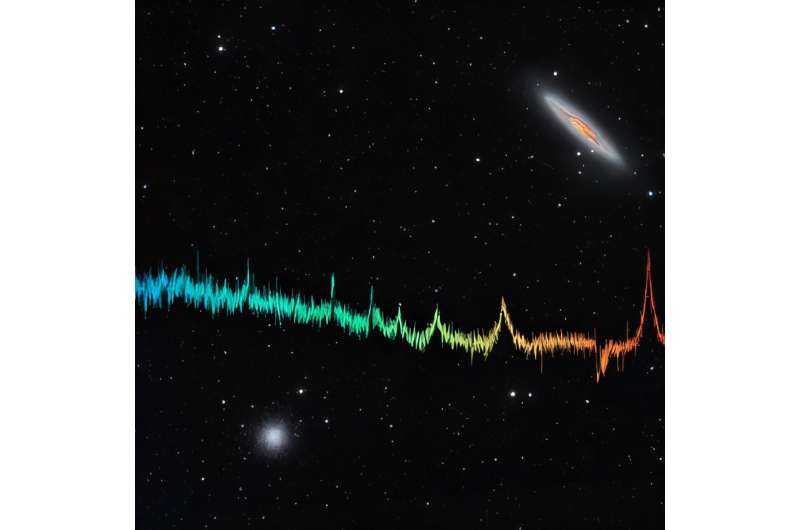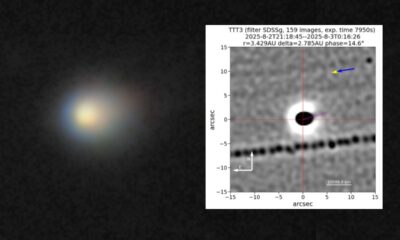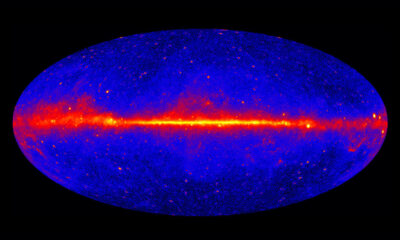Science
4MOST Telescope Achieves First Light, Paving Way for Cosmic Research

On October 18, 2025, the 4-meter Multi-Object Spectroscopic Telescope (4MOST) at the European Southern Observatory’s (ESO) Paranal Observatory in Chile successfully captured its first light. This significant milestone indicates that the telescope is now ready to embark on its scientific mission, which promises to enhance our understanding of the universe.
The 4MOST facility stands out not only for its size but also for its capabilities. Unlike conventional telescopes that primarily take images, 4MOST captures the spectra of celestial objects, allowing astronomers to analyze the light from each object across 18,000 color components. This unprecedented ability enables the simultaneous observation of up to 2,400 celestial bodies, facilitating detailed studies of their chemical compositions and physical properties.
Unlocking the Secrets of the Universe
Once fully operational, 4MOST will investigate a range of cosmic phenomena, including the formation and evolution of stars and planets, the structure of the Milky Way galaxy, and the nature of black holes. By gathering detailed data on thousands of objects every 10 to 20 minutes, the telescope aims to compile a comprehensive catalogue that includes temperatures, chemical compositions, and velocities of tens of millions of objects across the entire southern sky.
The facility’s development began in 2010, and it is designed to operate for at least 15 years. The Leibniz Institute for Astrophysics Potsdam (AIP) leads the consortium responsible for building and operating 4MOST. AIP’s contributions include the design of the wide-field camera, which features six lenses, each up to 90 cm in diameter, and a sophisticated fiber system composed of over 2,400 glass fibers, each as thin as a human hair.
Principal Investigator Roelof de Jong, who also heads the Milky Way section at AIP, expressed his enthusiasm: “It is incredible to see the first spectra from our new instrument. The data looks fantastic from the start and bodes well for all the different science projects we want to execute.”
Project Manager Joar Brynnel highlighted the collaborative effort involved in reaching this milestone: “Reaching this milestone is a wonderful achievement after more than a decade of intensive efforts. It is hard to put into words the excitement of realizing that the facility not only meets, but even exceeds the required performance.”
A New Era of Cosmic Exploration
The initial observations from 4MOST have already demonstrated the telescope’s unique capabilities. Among the objects observed was the elongated galaxy NGC 253, also known as the Sculptor or Silver Coin galaxy. This galaxy, discovered by Caroline Herschel in 1783, is located approximately 11.5 million light-years away and is known for its active star formation.
Additionally, 4MOST captured data from the globular cluster NGC 288, which contains around 100,000 ancient stars situated on the outskirts of the Milky Way. The observations included spectra from over 2,000 celestial objects in just a 20-minute time frame, allowing scientists to gather crucial information about their temperatures, masses, and evolutionary stages.
The telescope’s multi-fiber technology enables it to conduct various scientific programs simultaneously. Over its first five years, 4MOST plans to undertake 25 different science programs, ten of which are designed by consortium members, while the remaining fifteen were selected by an external committee of astronomers nominated by ESO.
Highlighted research areas include the origins of chemical elements, the formation of the first stars, and the growth of the Milky Way over cosmic time. The telescope will also investigate the nature of dark matter and dark energy, which are fundamental to understanding the universe’s structure and expansion.
The operational planning of 4MOST is coordinated remotely from the Max Planck Institute for Extraterrestrial Physics in Germany. Observations are executed by the European Southern Observatory, with data transferred to the 4MOST data center at the University of Cambridge for analysis.
As the 4MOST facility embarks on its scientific journey, it represents a significant advancement in astronomical research, poised to unlock new insights into the cosmos. The global team of over 700 researchers involved in the project eagerly anticipates the groundbreaking discoveries that lie ahead.
-

 Technology5 months ago
Technology5 months agoDiscover the Top 10 Calorie Counting Apps of 2025
-

 Health3 months ago
Health3 months agoBella Hadid Shares Health Update After Treatment for Lyme Disease
-

 Health3 months ago
Health3 months agoErin Bates Shares Recovery Update Following Sepsis Complications
-

 Technology4 months ago
Technology4 months agoDiscover How to Reverse Image Search Using ChatGPT Effortlessly
-

 Technology1 month ago
Technology1 month agoDiscover 2025’s Top GPUs for Exceptional 4K Gaming Performance
-

 Technology3 months ago
Technology3 months agoElectric Moto Influencer Surronster Arrested in Tijuana
-

 Technology5 months ago
Technology5 months agoMeta Initiates $60B AI Data Center Expansion, Starting in Ohio
-

 Technology5 months ago
Technology5 months agoRecovering a Suspended TikTok Account: A Step-by-Step Guide
-

 Health4 months ago
Health4 months agoTested: Rab Firewall Mountain Jacket Survives Harsh Conditions
-

 Lifestyle5 months ago
Lifestyle5 months agoBelton Family Reunites After Daughter Survives Hill Country Floods
-

 Health3 months ago
Health3 months agoAnalysts Project Stronger Growth for Apple’s iPhone 17 Lineup
-

 Technology4 months ago
Technology4 months agoHarmonic Launches AI Chatbot App to Transform Mathematical Reasoning





















